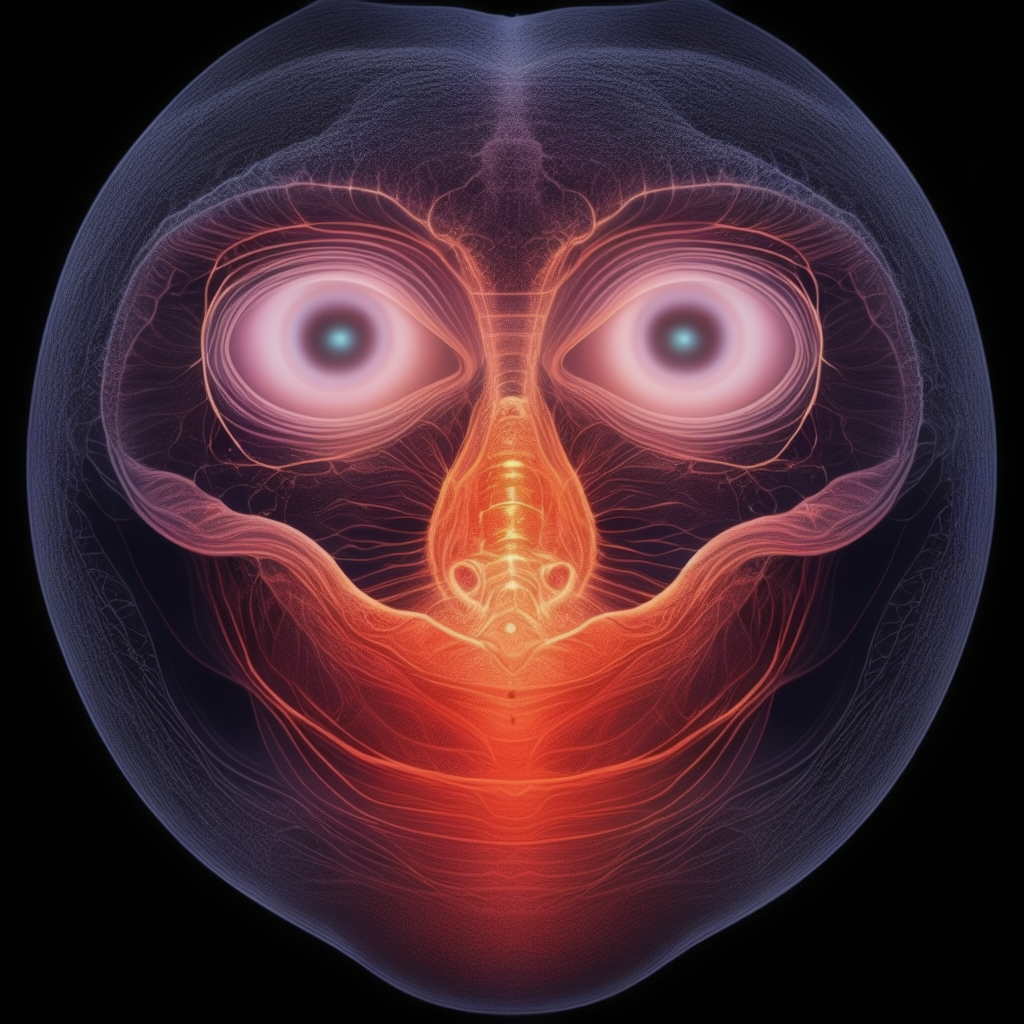Introduction: The story of evolution spans billions of years, weaving together the intricate tapestry of life on Earth. From the earliest origins of the universe to the emergence of complex organisms, the journey of evolution is a testament to the power of adaptation, diversity, and change. In this blog post, we embark on a journey through time to explore the evolution of life, from the molecular level of DNA and RNA to the vast array of species that inhabit our planet.
- The Origins of Life:
- The universe emerges from the Big Bang, giving rise to fundamental particles and elements.
- Simple organic molecules form in the primordial soup of early Earth, fueled by volcanic activity and lightning.
- The first self-replicating molecules, likely RNA-based, emerge, laying the foundation for life’s evolution.
- The Evolution of DNA and RNA:
- DNA emerges as the primary genetic material, providing a stable blueprint for heredity and evolution.
- RNA plays a dual role as both a genetic molecule and a catalyst for biochemical reactions, shaping early cellular processes.
- The evolution of DNA and RNA molecules leads to the development of more sophisticated genetic mechanisms, including replication, transcription, and translation.
- The Rise of Prokaryotes:
- Simple prokaryotic organisms, such as bacteria and archaea, emerge as the first forms of life on Earth.
- Prokaryotes exhibit remarkable diversity and adaptability, colonizing a wide range of environments, from deep-sea vents to acidic hot springs.
- The Era of Cyanobacteria:
- Cyanobacteria evolve the ability to perform photosynthesis, releasing oxygen as a byproduct and transforming the Earth’s atmosphere.
- The Great Oxygenation Event marks a turning point in Earth’s history, leading to the oxygenation of the atmosphere and the proliferation of aerobic organisms.
- The Advent of Eukaryotes:
- Eukaryotic cells, characterized by complex internal structures and membrane-bound organelles, emerge through symbiotic relationships and endosymbiosis.
- The development of eukaryotic cells paves the way for multicellular life and the diversification of complex organisms.
- The Cambrian Explosion:
- The Cambrian period witnesses a rapid diversification of life forms, known as the Cambrian Explosion.
- Complex multicellular organisms, including arthropods, mollusks, and vertebrates, emerge and proliferate, occupying diverse ecological niches.
- The Evolution of Plants and Animals:
- Plants colonize terrestrial environments, harnessing sunlight for photosynthesis and shaping terrestrial ecosystems.
- Animals evolve diverse body plans, behaviors, and adaptations, leading to the emergence of vertebrates, insects, mammals, and other taxa.
- Human Evolution:
- Homo sapiens evolve from earlier hominid ancestors, adapting to diverse environments and developing sophisticated cognitive abilities.
- The evolution of Homo sapiens is marked by the development of complex societies, language, culture, and technology.
- Diversity of Life:
- Life on Earth encompasses a vast array of species, from microscopic bacteria to towering sequoia trees and majestic blue whales.
- Each species possesses unique adaptations and characteristics shaped by millions of years of evolutionary history.
- Adaptations in Extreme Environments:
- Some species have evolved remarkable adaptations to thrive in extreme environments, such as deep-sea hydrothermal vents, polar regions, and deserts.
- Examples include extremophiles like thermophiles, which thrive in high-temperature environments, and halophiles, which thrive in saline habitats.
- These adaptations showcase the incredible diversity and resilience of life, demonstrating how organisms can colonize even the most inhospitable conditions on Earth.
Co-evolutionary Relationships:
- Many species engage in co-evolutionary relationships, where evolutionary changes in one species influence the evolution of another.
- Examples include plant-pollinator relationships, where plants evolve traits to attract specific pollinators, and predator-prey dynamics, where predators and prey co-evolve in response to each other’s adaptations.
- Co-evolutionary relationships drive evolutionary innovation and specialization, leading to the coexistence and diversification of species within ecosystems.
Evolutionary Arms Races:
- Evolutionary arms races occur when species engage in competitive interactions, such as predator-prey relationships or interspecific competition.
- In these interactions, adaptations in one species drive counter-adaptations in another, leading to a continual cycle of evolutionary change.
- Examples include the co-evolution of defensive mechanisms in prey species and offensive strategies in predators, resulting in a dynamic interplay of adaptation and counter-adaptation.
Mass Extinction Events:
- Throughout Earth’s history, mass extinction events have punctuated the evolutionary timeline, leading to the widespread loss of biodiversity.
- These events, such as the Permian-Triassic extinction or the Cretaceous-Paleogene extinction, have been caused by factors such as asteroid impacts, volcanic eruptions, and climate change.
- Mass extinctions create opportunities for new species to emerge and diversify, shaping the trajectory of evolution on a global scale.
Convergent Evolution:
- Convergent evolution occurs when unrelated species independently evolve similar traits or adaptations in response to similar environmental pressures.
- Examples include the evolution of wings in birds, bats, and insects, which enable flight despite arising from different evolutionary lineages.
- Convergent evolution highlights the role of natural selection in shaping the adaptive landscape and driving the emergence of analogous structures or behaviors in distantly related species.
Evolutionary Developmental Biology (Evo-Devo):
- Evo-Devo explores the genetic and developmental mechanisms underlying evolutionary change, focusing on the role of gene regulation, embryonic development, and morphological evolution.
- Research in Evo-Devo has revealed the conservation of developmental pathways across diverse species and elucidated how changes in gene expression can lead to morphological diversity.
- Understanding the genetic basis of evolution provides insights into the mechanisms driving evolutionary change and the origins of biological diversity.
Evolutionary Trade-offs:
- Evolutionary trade-offs occur when improvements in one trait come at the expense of another, resulting in compromises in fitness or performance.
- For example, organisms may face trade-offs between growth rate and longevity, or between reproductive investment and immune function.
- Trade-offs shape the allocation of resources within organisms and influence the evolution of life-history strategies, adaptation, and niche specialization.
Evolutionary Psychology:
- Evolutionary psychology explores how human behavior and cognition have been shaped by evolutionary processes, including natural selection, sexual selection, and social evolution.
- Concepts such as kin selection, reciprocal altruism, and mate choice provide evolutionary explanations for aspects of human behavior, sociality, and psychology.
- Evolutionary psychology offers insights into the adaptive function of behaviors and the evolutionary origins of psychological traits and tendencies.
Evolutionary Genetics:
- Evolutionary genetics studies the processes that drive genetic variation and evolution within populations.
- Concepts such as genetic drift, gene flow, and natural selection shape the genetic composition of populations over time.
- Understanding evolutionary genetics provides insights into patterns of genetic diversity, speciation, and adaptation within and between species.
Evolutionary Ecology:
- Evolutionary ecology investigates how ecological interactions, such as competition, predation, and resource availability, influence evolutionary processes.
- By studying the interplay between ecology and evolution, researchers can elucidate how environmental pressures drive the evolution of traits and behaviors in organisms.
- Evolutionary ecology provides a holistic perspective on the dynamics of ecosystems and the co-evolutionary relationships between species.
Evolutionary Medicine:
- Evolutionary medicine applies principles of evolutionary biology to understand the origins of human health and disease.
- Concepts such as evolutionary mismatch and trade-offs shed light on the evolutionary origins of modern health issues, including obesity, infectious diseases, and autoimmune disorders.
- By considering the evolutionary history of humans and other organisms, evolutionary medicine offers insights into preventive and therapeutic strategies for improving human health.
Evolutionary Anthropology:
- Evolutionary anthropology investigates the evolutionary history of humans and their primate relatives.
- Research in evolutionary anthropology encompasses topics such as human origins, primate behavior, and the cultural evolution of Homo sapiens.
- By studying the fossil record, comparative anatomy, and genetic relationships, evolutionary anthropologists reconstruct the evolutionary trajectories of hominin species and their adaptations to diverse environments.
Evolutionary Biogeography:
- Evolutionary biogeography explores the distribution of species and the historical processes that have shaped biodiversity across geographic regions.
- By examining patterns of species diversity, endemism, and dispersal, evolutionary biogeographers reconstruct the biogeographic history of continents, islands, and ecosystems.
- Understanding the evolutionary connections between different regions provides insights into the processes of speciation, extinction, and colonization that have shaped the Earth’s biota.
Evolutionary Conservation Biology:
- Evolutionary conservation biology integrates principles of evolutionary biology into conservation efforts to preserve biodiversity and protect endangered species.
- Concepts such as genetic diversity, adaptive evolution, and evolutionary rescue inform conservation strategies aimed at maintaining the long-term viability of populations and ecosystems.
- By considering the evolutionary potential of species and their responses to environmental change, evolutionary conservation biologists develop science-based approaches to conservation management and policy.
Evolutionary Ethics:
- Evolutionary ethics explores the evolutionary origins of moral principles, altruistic behaviors, and social norms in humans and other species.
- Concepts such as reciprocal altruism, kin selection, and cooperation provide evolutionary explanations for ethical behavior and social cooperation.
- Evolutionary ethics informs philosophical debates about the nature of morality, free will, and the relationship between biology and ethics in human societies.
- Evolutionary Neurobiology:
- Evolutionary neurobiology investigates how the nervous system has evolved across different species to mediate behavior, cognition, and sensory processing.
- Comparative studies of brain anatomy, neurochemistry, and neural circuits provide insights into the evolutionary origins of complex behaviors and cognitive abilities.
- By tracing the evolutionary history of neural structures and functions, evolutionary neurobiologists uncover the adaptive significance of brain evolution and the relationship between brain complexity and ecological niche.
- Evolutionary Linguistics:
- Evolutionary linguistics explores the evolutionary origins and development of language in humans and other species.
- By examining the genetic, cognitive, and cultural foundations of language, evolutionary linguists investigate how language has evolved as a communication system and adaptive trait.
- Comparative studies of language diversity, syntax, and phonetics shed light on the evolutionary processes that have shaped linguistic diversity and the universals underlying human language.
- Evolutionary Robotics:
- Evolutionary robotics applies principles of
 to the design and optimization of robotic systems.
to the design and optimization of robotic systems. - Evolutionary algorithms, such as genetic algorithms and artificial evolution, are used to evolve robot behaviors, morphologies, and control strategies in simulated or physical environments.
- By mimicking the processes of natural selection and adaptation, evolutionary robotics enables the development of autonomous robots capable of adapting to diverse tasks and environments.
- Evolutionary Art and Aesthetics:
- Evolutionary art and aesthetics explore the evolutionary origins and cultural expressions of beauty, creativity, and artistic preferences.
- Evolutionary theories of art propose that aesthetic preferences and artistic behaviors have evolved as adaptive traits shaped by sexual selection, social signaling, and cognitive biases.
- By studying cross-cultural variations in artistic traditions and aesthetic preferences, evolutionary art theorists uncover the universal principles and evolutionary roots of human creativity and expression.
Evolutionary Sociology:
- Evolutionary sociology examines the role of evolutionary processes in shaping social structures, institutions, and behaviors in human societies.
- Evolutionary theories of social behavior propose that human sociality, cooperation, and conflict have evolved as adaptive strategies to maximize reproductive success and survival.
- By integrating evolutionary principles with sociological theories, evolutionary sociologists explore how cultural practices, norms, and institutions reflect underlying evolutionary pressures and adaptations.
Evolutionary Economics:
- Evolutionary economics applies principles of evolution to the study of economic systems, institutions, and behaviors.
- Evolutionary theories of economics propose that economic dynamics, innovation, and competition are driven by processes of variation, selection, and adaptation analogous to biological evolution.
- By examining the evolutionary origins of economic phenomena, evolutionary economists seek to understand how economic systems evolve over time and how policy interventions can influence economic outcomes in the long term.
Conclusion: The story of evolution is a testament to the resilience, adaptability, and creativity of life on Earth. From the molecular intricacies of DNA and RNA to the diversity of species that inhabit our planet, evolution has shaped the world we inhabit today. By understanding our evolutionary past, we gain insights into the interconnectedness of life and our place in the grand tapestry of existence.







